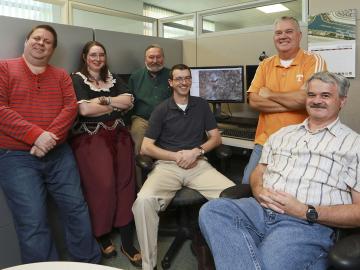Filter News
Area of Research
- (-) Geographic Information Science and Technology (2)
- (-) Quantum information Science (3)
- Advanced Manufacturing (7)
- Biological Systems (3)
- Biology and Environment (17)
- Biology and Soft Matter (1)
- Building Technologies (2)
- Chemical and Engineering Materials (2)
- Chemistry and Physics at Interfaces (6)
- Clean Energy (110)
- Climate and Environmental Systems (2)
- Computational Chemistry (1)
- Computer Science (2)
- Energy Frontier Research Centers (7)
- Energy Sciences (1)
- Functional Materials for Energy (6)
- Fusion and Fission (5)
- Fusion Energy (6)
- Isotope Development and Production (1)
- Isotopes (4)
- Materials (89)
- Materials for Computing (5)
- Materials Synthesis from Atoms to Systems (5)
- Materials Under Extremes (6)
- National Security (12)
- Neutron Data Analysis and Visualization (2)
- Neutron Science (37)
- Nuclear Science and Technology (28)
- Nuclear Systems Modeling, Simulation and Validation (2)
- Quantum Condensed Matter (2)
- Reactor Technology (1)
- Supercomputing (58)
- Transportation Systems (2)
Media Contacts

Scientists at ORNL and the University of Nebraska have developed an easier way to generate electrons for nanoscale imaging and sensing, providing a useful new tool for material science, bioimaging and fundamental quantum research.

Kübra Yeter-Aydeniz, a postdoctoral researcher, was recently named the Turkish Women in Science group’s “Scientist of the Week.”

Scientists at the Department of Energy’s Oak Ridge National Laboratory have developed a new method to peer deep into the nanostructure of biomaterials without damaging the sample. This novel technique can confirm structural features in starch, a carbohydrate important in biofuel production.

Bruce Lester has had a lot of jobs: fisherman, horse trainer, “professional stair builder.” He last worked for a real estate company, surveying land using geographic software. “When the bottom fell out of the construction industry and the company downsized, I got laid off,”





